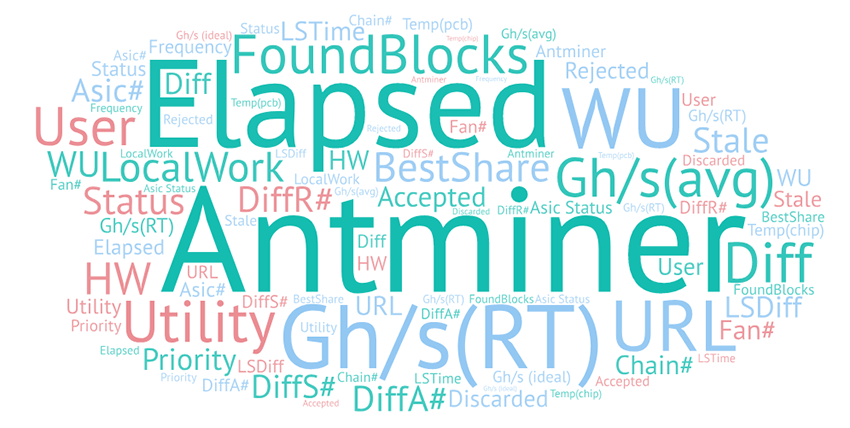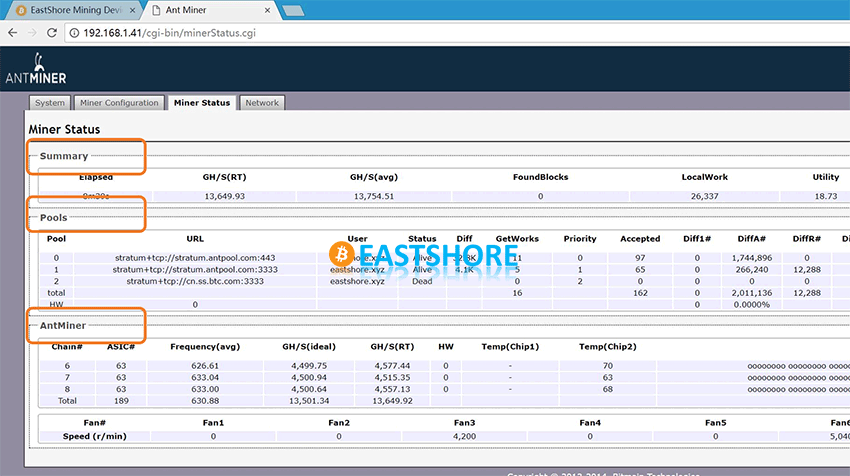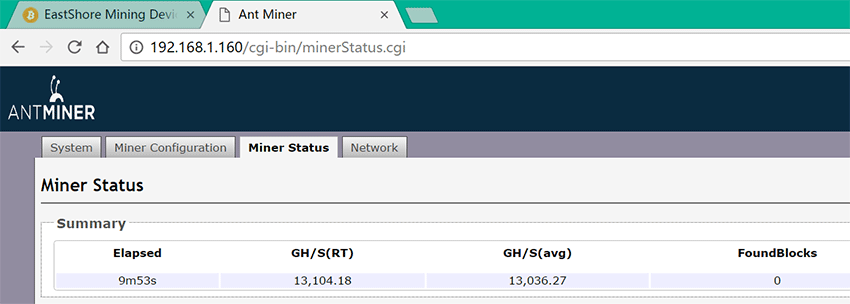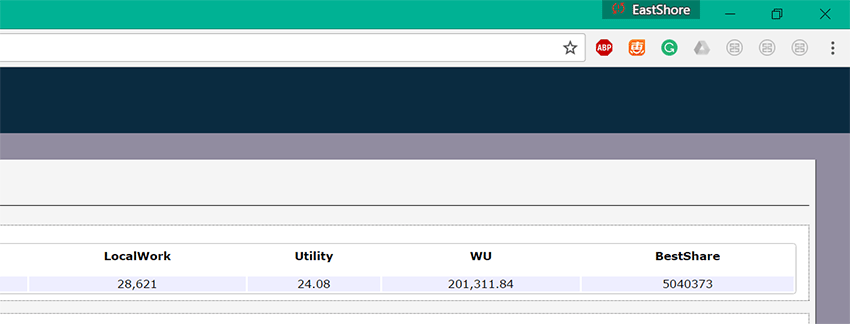In this article, we will explain the Miner Status page of Antminers. For setting rigs up, please refer to our tutorial: www.eastshoremining.com/tour/
We will take Antminer S9 as an example. In the Miner Status tab, there are 3 sections of info: Summary, Pools and Antminer.
The “Summary” Section
Elapsed: this indicates how long the miner has been working
GH/S(RT): real time hash speed
GH/S(avg): average hash speed
FoundBlocks: number of the blocks that the miner has helped the pool to solve. Note that the numbers don’t mean you are getting the full block payment because it’s a pool mining. Payout will be based on how much work your miner has contributed to solving this block.
LocalWork: this indicates the work the miner is solving.
Utility: utility is the measure of how many shares are submitted per minute.
WU: WU means “Work Utility”. Work utility is the product of hashrate * luck and only stabilizes over a very long period of time. Assuming all your work is valid work, bitcoin mining should produce a work utility of approximately 1 per 71.6MH. This means at 5GH you should have a WU of 5000 / 71.6 or ~ 69. You cannot make your machine do “better WU” than this – it is luck related. However you can make it much worse if your machine produces a lot of hardware errors producing invalid work.
BestShare: if your miner or pool computes a hash value that is lower than that maximum, then you or the pool have solved a block.
The “Pools” Section
URL: this is the pool address
User: the user name of the worker
Status: status of pool connection. Alive means it is connected to the pool. If otherwise, it will show “dead”.
Diff: mining difficulty.
Priority: the priority of the pool you set. Usually, the miner will try to connect the pool with the priority “0” first, if failed, then it will try to connect the pool with the priority “1”, then the priority “2”, and so on.
Accepted: this indicates the shares accepted by the pool. Any shares that were “accepted” by the pool are set in stone (unless you delete your worker or your account).
DiffA#: the difficulty of the last Accepted share.
DiffR#: the difficulty of the last Rejected share.
DiffS#: the difficulty of the last Stale share.
Rejected: If your miner successfully performs work, but submits it too late for that block, it is called a ‘rejected share’ of work. You will get no credit for that work, and it cannot be banked towards future coin generation. Rejected shares are inevitable, regardless of how powerful your mining computer is. The desired goal is to minimize rejected shares and maximize accepted shares.
Discarded: this indicates the shares that were never turned into the pool. Maybe someone solved that share first, or maybe the block was solved and the miner restarted the work. Discards are not rejects, they aren’t even shares. It means your miner had work prepared to hash but instead it discarded it in favor of newer/fresher work. You aren’t wasting any hashes when your miner discards work.
Stale: stale is when your miner submits work for a block that was already solved. This means your miner wasn’t notified about the new block yet, it’s inevitable.
LSDiff: last share difficulty.
LStime: time since the last share.
The “Antminer” Section
Chain#: hash board number. There are usually 3 hash boards in 1 Antminer.
ASIC#: the quantity of chips on each hash board.
Frequency: hash board working frequency.
GH/s (ideal): Ideal or expected hash speed.
GH/S(RT): the real time hash speed of the hash board
HW: hardware error.
Temp(PCB): temperature of the hash board
Temp(Chip): temperature of chips
ASIC Status: status of the chips. 0 stands for normal, x stands for otherwise.
Fan#: speed of the fans
On the top of the page, there are other tabs (System, Miner Configuration, and Network) besides the “Miner Status” page, in which terms are easier to understand. We will explain the terms in those tabs if requested.









Pingback: Tutorial: General Mining Guide & TroubleShooting for Antminer Models | EastShore Mining Devices